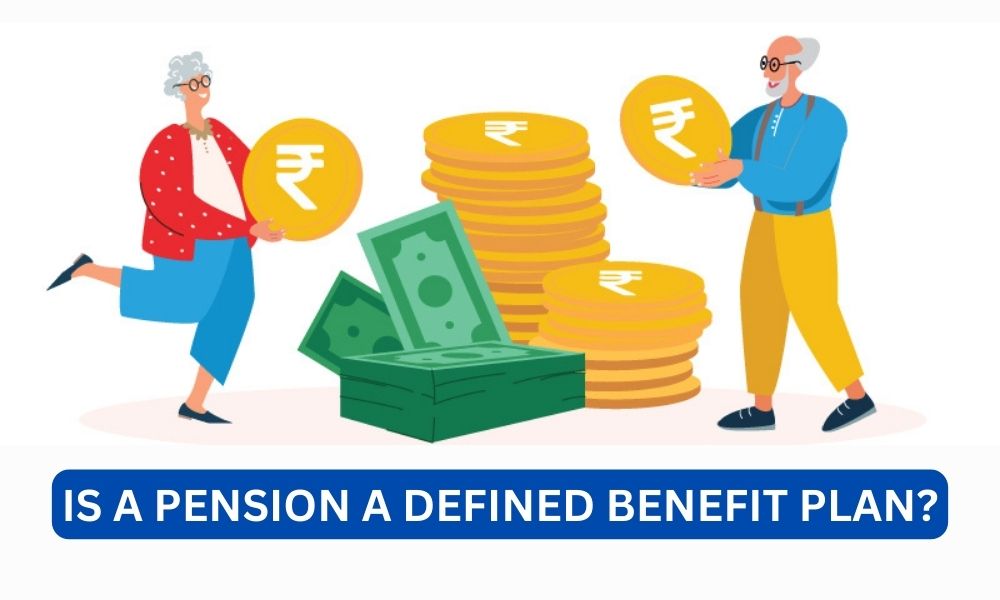A pension is a type of retirement plan that provides a steady income to employees after they retire. It is a form of deferred compensation, where employees contribute a portion of their salary during their working years, and the employer also makes contributions on their behalf. Pensions have been a popular form of retirement savings for many years, but with the rise of other retirement plans such as 401(k)s, there has been some confusion about whether a pension is a defined benefit plan. In this article, we will explore the concept of a defined benefit plan and discuss whether a pension falls under this category.
Contents
Understanding Defined Benefit Plans
A defined benefit plan is a type of retirement plan where the employer promises to pay a specific amount of money to the employee upon retirement. This amount is usually based on the employee’s salary and years of service with the company. In other words, the benefit is “defined” by a formula, and the employer is responsible for funding the plan to ensure that the promised benefits can be paid out.
Defined benefit plans are typically funded by the employer, although some plans may require employee contributions as well. The employer is responsible for managing the investments and assuming the investment risk. This means that if the investments do not perform well, the employer is still responsible for paying out the promised benefits to employees.
Read:How much is unemployment benefit?One of the main advantages of a defined benefit plan is that it provides a guaranteed income stream for retirees. This can be especially beneficial for employees who do not have other sources of retirement income. Additionally, the employer assumes the investment risk, which can provide peace of mind for employees who may not have the knowledge or resources to manage their own investments.
Is a Pension a Defined Benefit Plan?
Now that we have a better understanding of defined benefit plans, let’s explore whether a pension falls under this category. The short answer is yes, a pension is a defined benefit plan. Pensions have been the traditional form of defined benefit plans for many years, and they share many of the same characteristics.
Firstly, pensions provide a guaranteed income stream to retirees, which is a defining feature of a defined benefit plan. The amount of the pension is usually based on the employee’s salary and years of service, just like a traditional defined benefit plan. This means that employees can have a good idea of how much they will receive in retirement, making it easier to plan for their future.
Secondly, pensions are funded by the employer, and the employer assumes the investment risk. This means that the employer is responsible for managing the investments and ensuring that there are enough funds to pay out the promised benefits. If the investments do not perform well, the employer is still responsible for paying out the benefits, just like in a traditional defined benefit plan.
Read:How to apply for caregiver benefits?However, it is worth noting that not all pensions are the same. Some pensions may have different features or may be structured differently, which can affect how they are classified. For example, some pensions may have a defined contribution component, where employees can make contributions to their pension plan. In this case, the pension may be considered a hybrid plan, with both defined benefit and defined contribution elements.
Examples of Pensions as Defined Benefit Plans
To further illustrate the point, let’s look at some real-life examples of pensions as defined benefit plans.
- The Federal Employees Retirement System (FERS) – This is the retirement plan for federal employees in the United States. It is a defined benefit plan that provides a guaranteed income stream to retirees based on their salary and years of service. The plan is funded by the employer, and the employer assumes the investment risk.
- The Canada Pension Plan (CPP) – This is a social insurance program in Canada that provides a monthly pension to retirees. It is a defined benefit plan that is funded by contributions from employees, employers, and the government. The amount of the pension is based on the employee’s contributions and years of service.
- The British Airways Pension Scheme – This is the pension plan for employees of British Airways. It is a defined benefit plan that provides a guaranteed income stream to retirees based on their salary and years of service. The plan is funded by the employer, and the employer assumes the investment risk.
These are just a few examples of pensions that are considered defined benefit plans. There are many other pension plans around the world that share similar characteristics.
Read:Which of the following is not a limited benefit plan?The Decline of Pensions
While pensions have been a popular form of retirement savings for many years, they have been on the decline in recent decades. This is due to a variety of factors, including changes in the workforce, economic conditions, and the rise of other retirement plans such as 401(k)s.
One of the main reasons for the decline of pensions is the shift from traditional pension plans to defined contribution plans, such as 401(k)s. Defined contribution plans place the responsibility of managing investments and assuming investment risk on the employee, rather than the employer. This has shifted the risk from the employer to the employee, and has also made it more difficult for employees to predict their retirement income.
Additionally, the rise of the gig economy and the increase in contract work has also contributed to the decline of pensions. Many gig workers and contract workers do not have access to traditional pension plans, and instead, rely on individual retirement accounts (IRAs) or other forms of retirement savings.
The Future of Pensions
Despite the decline of pensions, they are still an important form of retirement savings for many employees. In fact, some companies are starting to bring back pensions as a way to attract and retain top talent. For example, in 2019, IBM announced that it would be offering a pension plan to its employees for the first time in over a decade.
Additionally, some countries are exploring ways to strengthen their pension systems. For example, in the United States, there have been discussions about expanding Social Security benefits to provide a more robust retirement income for retirees. In Canada, there have been proposals to increase the Canada Pension Plan benefits to help retirees who may not have access to other forms of retirement savings.
It is clear that pensions will continue to play a role in retirement planning, even as other retirement plans become more popular. However, it is important for employees to understand the differences between pension plans and other retirement plans, so they can make informed decisions about their retirement savings.
Conclusion:
In conclusion, a pension is a defined benefit plan. It provides a guaranteed income stream to retirees, is funded by the employer, and the employer assumes the investment risk. While pensions have been on the decline in recent years, they are still an important form of retirement savings for many employees. It is important for employees to understand the differences between pension plans and other retirement plans, so they can make informed decisions about their retirement savings. As the workforce continues to evolve, it will be interesting to see how pensions adapt and change to meet the needs of employees in the future.









